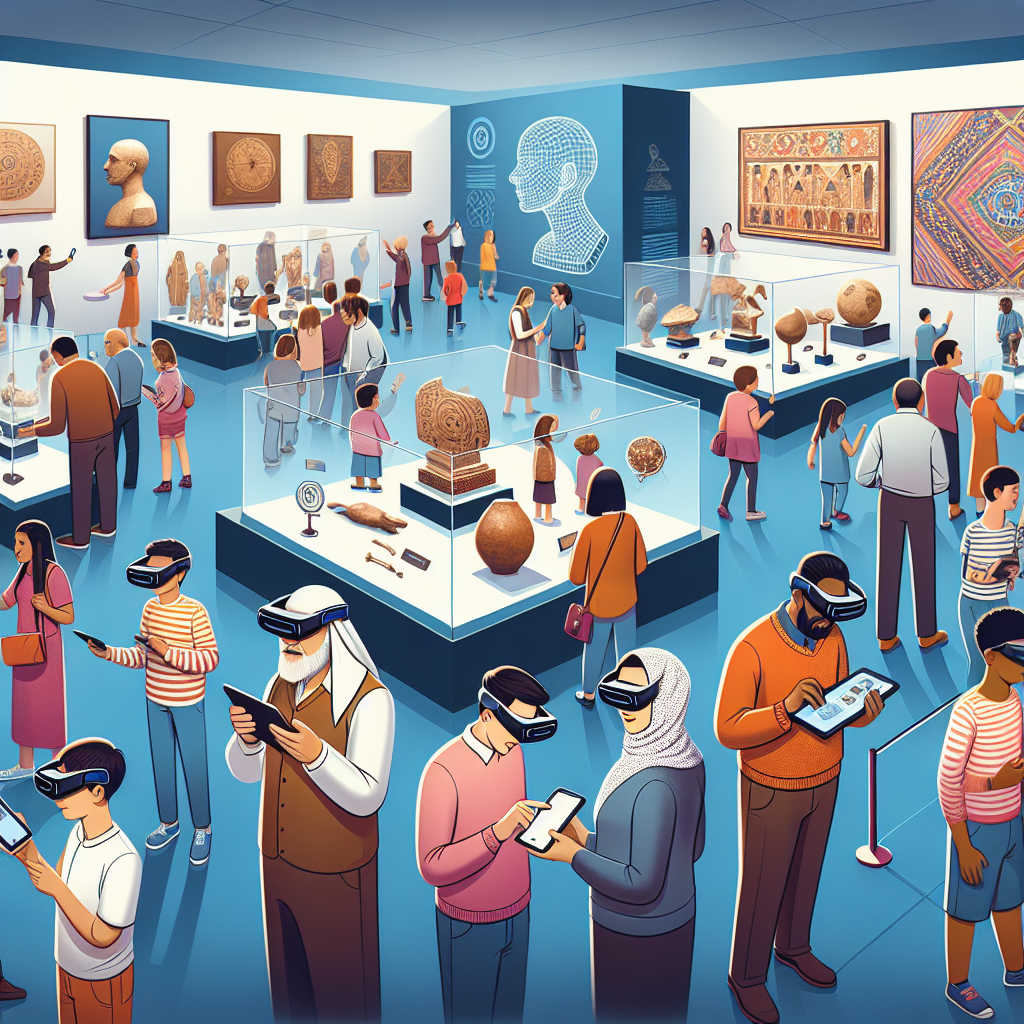Immersive Learning: How AR Technology is Transforming Museum Education
In recent years, the use of augmented reality (AR) technology has become increasingly popular in various fields, including education. One area where AR technology has shown great potential is in museum education. By combining the traditional museum experience with interactive AR elements, museums are able to engage visitors in new and exciting ways, making learning more immersive and engaging than ever before.
What is AR Technology?
Augmented reality is a technology that overlays digital content on top of the physical world, creating a blended reality where real-world objects and digital information coexist. This technology is often used in smartphone apps and other digital devices to enhance the user’s experience of the world around them. In the context of museum education, AR technology can be used to provide additional information, interactive exhibits, and other engaging experiences that complement the museum’s collections and exhibitions.
How is AR Transforming Museum Education?
One of the main ways that AR technology is transforming museum education is by making learning more interactive and engaging. By using AR apps, visitors can access additional information about museum objects, view 3D models, and engage with interactive exhibits that bring history and art to life in new and exciting ways. This can help to deepen visitors’ understanding of the museum’s collections and make learning more interactive and enjoyable.
For example, visitors to a natural history museum could use an AR app to view 3D models of extinct animals, learn about their habitats and behaviors, and even interact with virtual specimens. This kind of immersive experience can help to bring the museum’s collections to life in a way that traditional exhibits cannot, making learning more engaging and memorable for visitors of all ages.
Another way that AR technology is transforming museum education is by making learning more accessible to a wider audience. By using AR apps, museums can provide multilingual information, audio descriptions, and other accessibility features that make their collections more inclusive and welcoming to visitors with diverse backgrounds and abilities. This can help to make museum education more accessible and engaging for everyone, regardless of their language skills, physical abilities, or learning preferences.
In addition, AR technology can also help to personalize the museum experience for individual visitors. By using AR apps, visitors can access personalized tours, recommendations, and interactive experiences that cater to their specific interests and preferences. This can help to make learning more relevant and engaging for each visitor, increasing their enjoyment and understanding of the museum’s collections and exhibitions.
Overall, AR technology is transforming museum education by making learning more interactive, accessible, and personalized than ever before. By combining the traditional museum experience with interactive digital elements, museums are able to engage visitors in new and exciting ways, making learning more immersive and enjoyable for everyone.
FAQs:
1. How do I access AR experiences in museums?
To access AR experiences in museums, you will need to download a compatible AR app on your smartphone or tablet. Many museums provide links to download their AR apps on their websites or at the museum entrance. Once you have downloaded the app, simply follow the instructions to access AR content and interactive experiences during your visit.
2. Are AR experiences available at all museums?
Not all museums have implemented AR technology in their exhibits and educational programs. However, an increasing number of museums are incorporating AR technology into their collections and exhibitions to enhance the visitor experience and make learning more interactive and engaging.
3. Can I use AR technology from home to explore museum collections?
Some museums offer virtual tours and AR experiences that can be accessed online from the comfort of your own home. These virtual tours allow you to explore museum collections, exhibitions, and interactive experiences using your smartphone, tablet, or computer. Check the museum’s website for more information on accessing virtual AR experiences from home.
4. Is AR technology safe for children to use in museums?
Yes, AR technology is generally safe for children to use in museums, as long as parents or guardians supervise their use and ensure that they follow museum guidelines and safety instructions. AR experiences are designed to enhance the educational value of museum visits and provide interactive learning opportunities for visitors of all ages.
5. How can I learn more about AR technology and museum education?
To learn more about AR technology and its impact on museum education, consider attending museum events, workshops, or conferences that focus on digital technology and education. You can also explore online resources, articles, and research studies on AR technology and museum education to deepen your understanding of this innovative approach to learning.
In conclusion, AR technology is transforming museum education by making learning more interactive, accessible, and personalized than ever before. By incorporating AR technology into their exhibits and educational programs, museums are able to engage visitors in new and exciting ways, making learning more immersive and enjoyable for everyone. As the use of AR technology continues to grow, museums are likely to explore new ways to enhance the visitor experience and provide innovative educational opportunities that cater to a wide range of interests and abilities.
